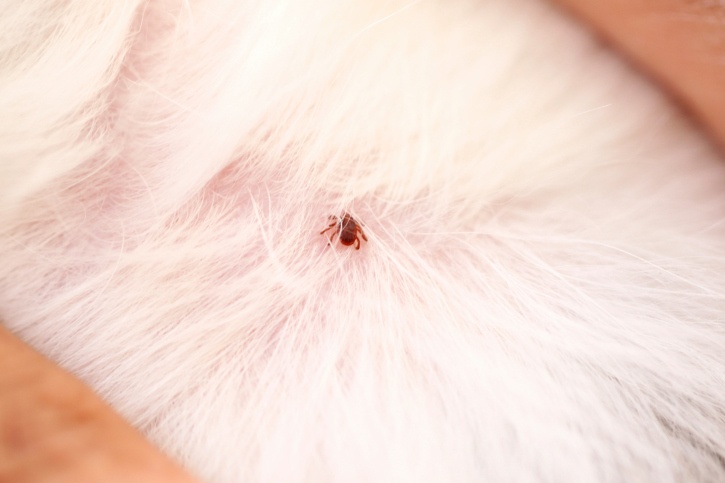“This post contains affiliate links, and I will be compensated if you make a purchase after clicking on my links.”

If you’ve ever seen a tick – especially if it is on you or your pet friend – you’ll never forget it. Ticks can cause people and pets endless hours of suffering and is a potentially life-threatening disease. As if ticks were not bad enough, these blood suckers can also transmit serious diseases to our pets. While Lyme Disease is fairly well known in humans, not everyone is aware of how it can affect our dogs. April has been designated National Prevent Lyme Disease in Dogs month by the Lyme Disease Foundation.
Dog owners especially need to be aware of the potential for their pet to acquire ticks and the possibility of their dog contracting Lyme Disease. (Cats are remarkably resistant to Lyme Disease). Since they spend more time outdoors and are often fond of running through high grass or brush, they might be at a higher risk for contracting this tick borne illness. There are many different kinds of ticks and they can be found in every state and have even been known to survive longer than a year. They emerge in the spring, remain pretty active during the summer months and then go through a burst of activity in the fall. Once they attach themselves to your dog, the bacteria that cause Lyme Disease can be transmitted within 24 hours.
Symptoms of Lyme Disease can be mild, such as joint pain, swelling, lethargy and fever or can become severe if the bacteria attacks the dog’s kidneys or nervous system. It takes between two and five months for your dog to show signs of Lyme disease after being bitten by an infected tick. While there is treatment available for Lyme disease, cases caught early are less difficult to treat.
Fortunately, veterinary science has several options available to protect our pets: application of a topical flea/tick preventative and vaccination. Topical flea/tick preventatives give 30 days of protection and are easy to use. Newer vaccines actually help block the transmission of Lyme from the tick to the dog. Due to their small size, many ticks will go unnoticed by pet owners so it is important to examine your dog thoroughly each day for ticks. Taking these precautions will help prevent Lyme Disease in your dog.
by M. Kathleen Shaw, DVM
Dr. Shaw is Chair of the VVMA’s Media Relations Committee and is a veterinarian from North Bennington.
The Vermont Veterinary Medical Association (VVMA), founded in 1898, is a professional organization of 340 veterinarians dedicated to compassionate animal care and quality medicine. For more information, visit www.vtvets.org or call (802) 878-6888.

















